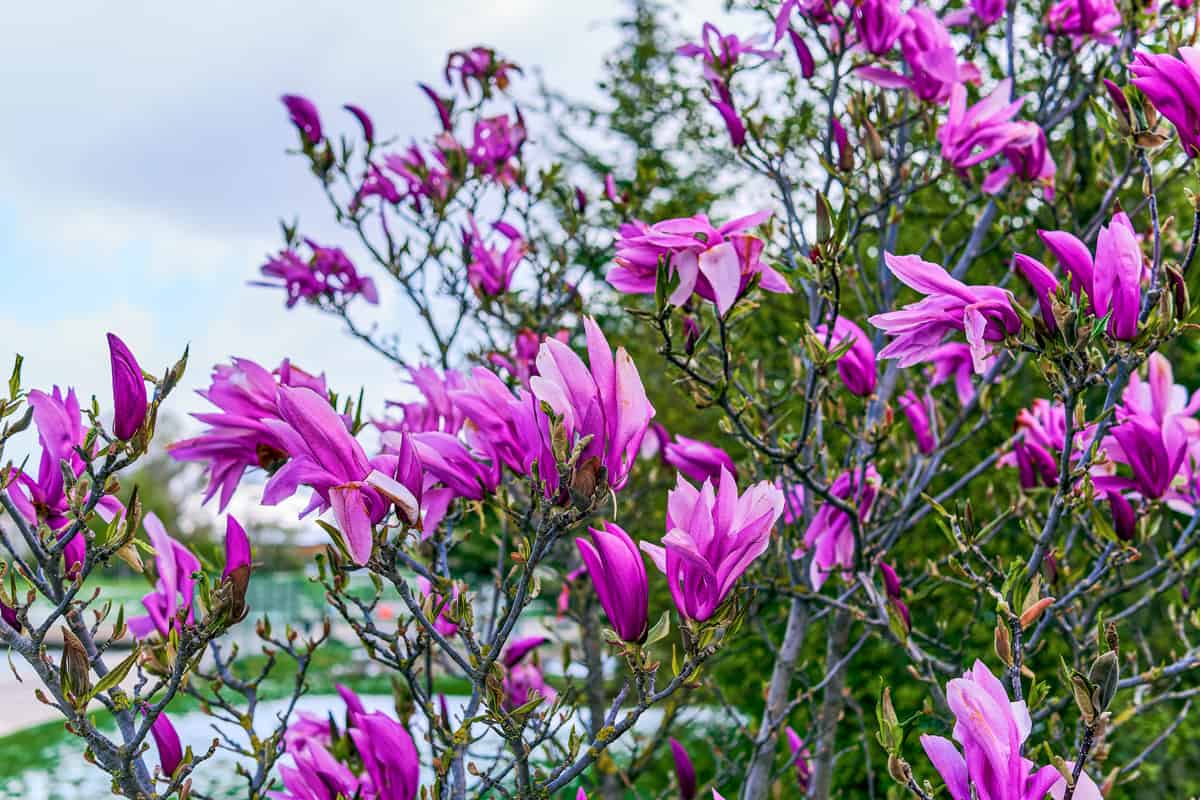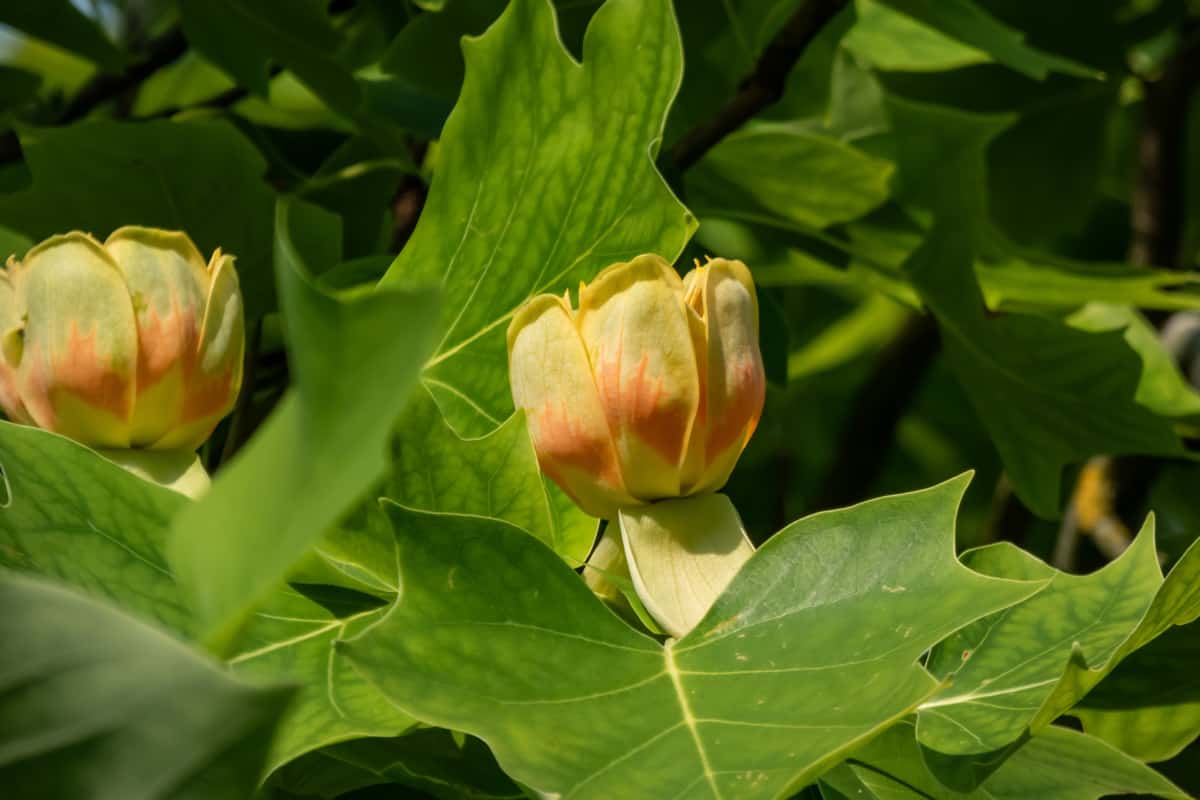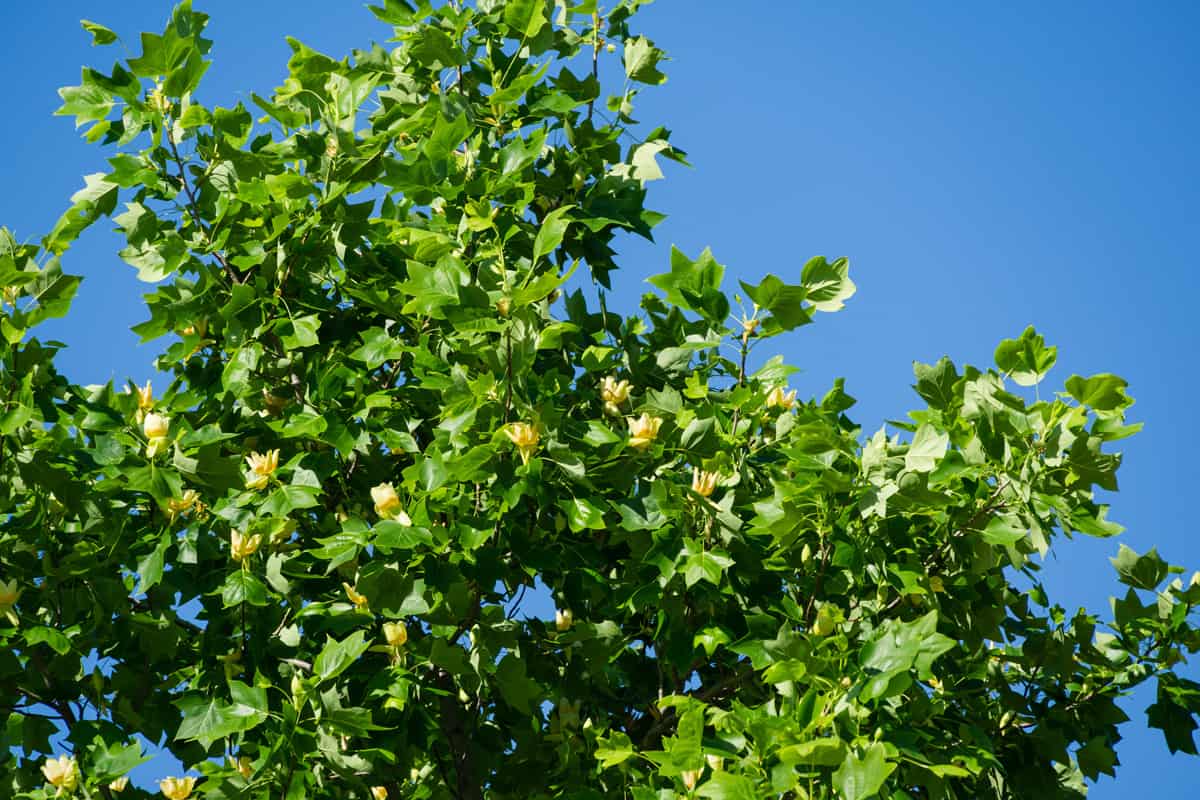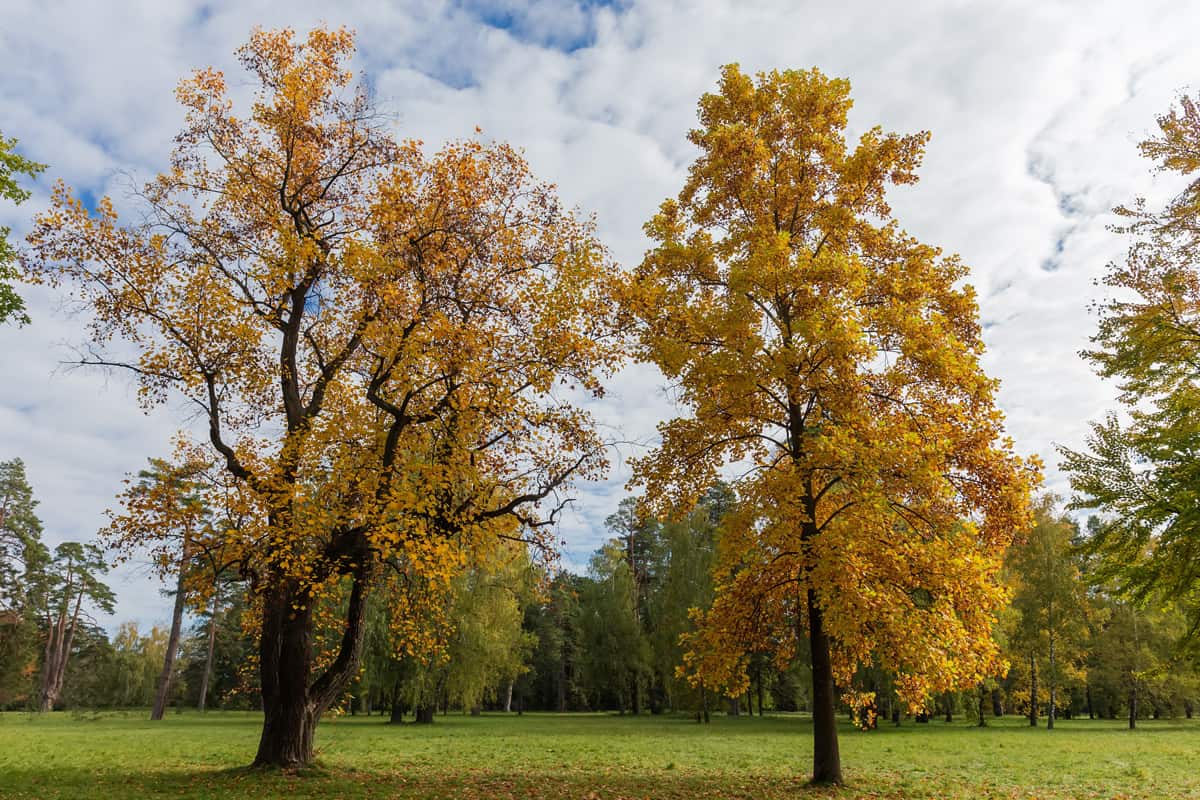Tulip trees, known for their stunning blooms and impressive height, can leave you wondering whether they will grace your garden with flowers every year.
In general, tulip trees that are a few decades old will usually flower reliably every year and can continue flowering for several hundred years.
However, it's important to know that these trees don't bloom until they reach maturity, which is typically around 15 to 20 years.
As a tulip tree enthusiast, you might be curious about how to ensure these majestic trees bloom annually.
Ensuring your tulip trees are planted in a suitable location and properly cared for will greatly improve their chances of producing those beautiful tulip-shaped flowers.
Annual maintenance of your tree, including pruning, watering, and fertilizing, will promote its overall health and contribute to a higher likelihood of blossoming each year.
Keep in mind that while tulip trees can bloom every year once they reach maturity, some factors might interfere with annual flowering, such as the local climate or soil composition.
Being attentive to your tree's needs, monitoring its growth, and adapting your care accordingly will help cultivate its blooming potential and offer a stunning display in your garden each spring.

Tulip Tree Families and Distribution
The tulip tree, also known as Liriodendron tulipifera, is a beautiful and unique tree.
Its flowers are yellowish-green with a touch of orange on the outside and resemble the shape of a tulip, giving the tree its name.
The green leaves are broadly lobed and turn a vivid golden yellow in the fall.
Tulip Trees are Members of the Magnolia Family
Your tulip tree belongs to the Magnolia family, which includes a variety of tree and shrub species. This family is known for its large, showy flowers and attractive foliage.
The blooms of a tulip tree typically appear in late spring or early summer, usually sometime between May and June, and can last for a month or more.
They are Native to North America

Tulip trees are native to North America and can be found throughout the eastern United States.
Early Native Americans cherished the tulip tree for its abundant and fragrant blooms as well as its sturdy trunk, which they used for constructing canoes.
When planting a tulip tree in your own garden, ensure you choose a location with enough space for the tree to grow, as it can reach heights of up to 90 feet.
The best time to plant tulip trees is in early spring once the final frost has passed.
To encourage your tree to bloom each year, provide it with well-drained soil, a sunny location, and adequate water during dry periods.
With a little care and attention, your tulip tree will become a beautiful and thriving centerpiece in your landscape.
Blooming and Flowering

While these trees can bloom annually, their blooming frequency can vary based on factors such as age, maturity, and seasonal changes.
Age and Maturity
As your tulip tree matures, expect it to bloom consistently each year when it reaches around 15 years old.
It is important to keep in mind that, once mature, your tulip tree can continue flowering for several hundred years.
Keep an eye on your tree's age to estimate when you can expect it to start blooming.
Seasonal Changes
Tulip trees usually flower during the spring months. Therefore, monitoring the tree during this time of year can help predict when it will bloom.
However, note that factors like sunlight exposure and climate can impact seasonal blooming patterns.
To ensure a healthy tulip tree, make sure it receives an adequate amount of sunlight and is planted in well-draining soil.
Read here for more information: When Does A Tulip Tree Bloom?
Years Without Blooms
The wait is long, that's for sure. Don't expect tulip trees to flower for several years.
However, if it's already at least 15 years old and you still don't see any signs of flowering, pests, environmental and nutrient factors may be a reason.
Cold Winters
Cold winters can have an impact on whether your tulip tree will bloom the following year.
When facing harsh winter temperatures, your tree might focus more on survival than on producing blooms.
To help your tulip tree, make sure it's planted in a sheltered location that can provide some protection from strong winds and extreme cold.
Nutrient Deficiency
A nutrient deficiency can also cause your tulip tree to skip blooming. Ensure you're providing the necessary nutrients for your tree by amending the soil as needed.
To maintain good soil fertility, consider using a balanced, slow-release fertilizer designed for trees.
Pests and Problems
Pests and problems can also hinder your tulip tree's ability to bloom every year.
Keep an eye out for common tree pests like aphids, scales, and caterpillars, and address any infestations promptly. Disease issues, like leaf spots or cankers, should be treated as necessary.
Don't forget to monitor your tree's watering needs, as both under- and over-watering can disrupt bloom production.
A healthy tulip tree is more likely to produce consistent blooms, so doing your part to maintain its health will lead to greater success.
Growing and Caring for Tulip Trees

If you're looking to cultivate this majestic tree in your own backyard, there are a few key tips and tricks to keep in mind to ensure healthy growth.
Location and Sunlight
When choosing the location for your tulip tree, ensure you select a spot in your garden that receives full sun.
Tulip trees need at least six or more hours of direct sunlight each day to thrive and bloom properly.
Soil and Fertilizer
Tulip trees require well-drained, moist soil to grow their best. Although they can tolerate various soil types, slightly acidic soil with added compost is ideal.
Regular applications of stake-type fertilizer during the growing season can help your tulip tree's growth, but be cautious not to over-fertilize.
Using potting soil or other soil amendments may also be necessary depending on the quality of your garden soil.
Watering
Maintaining consistent moisture is crucial for keeping your tulip tree healthy. Make sure to provide supplemental irrigation of five to seven gallons per week, especially during the summer and early fall.
When the top three inches of soil are dry, it's time to water your tree again. It's important to monitor your tulip tree's water needs, as inadequate water supply may result in leaf yellowing.
Pruning
As tulip trees are known for their rapid growth, routine pruning is essential. Pruning helps maintain the tree's shape and control its size.
Remove dead or weak growth in late winter and early spring, and conduct a thorough thinning every few years to keep the tree healthy.
Additionally, when the tree is young, stake it and train it to grow with one straight leader.
In conclusion, by carefully addressing these key aspects of tulip tree planting and care, you can improve the chances of your tulip tree blooming every year.
How Tall Do Tulip Trees Get?

Height and Spread
Tulip trees, also known as yellow poplars, can grow quite tall, reaching up to 90 feet in height with a 50-foot spread.
They are magnificent trees native to areas like Tennessee and Indiana, thriving in USDA hardiness zones 4 to 9.
Read this post to learn what zones you can grow your tulips in: What Zone Do Tulip Trees Grow In?
Although they are not actually related to tulip flowers, their beautiful spring blooms resemble tulips and are attractive to pollinators.
Growth Stages
As your tulip tree goes through its life cycle, it will progress through several growth stages: seedling, sapling, and mature tree.
In general, tulip trees grow rapidly at first, with an average growth rate of 2-3 feet per year.
This fast growth allows their roots to establish themselves quickly, providing support and access to energy for the rapidly growing tree.
The flowers are worth the wait, as they provide nectar for pollinators and are the main attraction of these deciduous trees.
Lifespan
Tulip trees are known to live for around 300 years, sometimes even longer.
Throughout their lifespan, they will continue to produce seeds and contribute to the ecosystem.
In addition to their stunning blooms, their leaves display a vibrant canary yellow color during the fall season, making them a great addition to your landscape.
To ensure that your tulip tree thrives, provide it with plenty of space to grow, both above ground and for its root system.
Plant your tree in well-draining soil, and water it regularly during the first few years to establish a strong root system.
It's essential to care for your tulip tree throughout its life to enjoy its beautiful blooms and distinctive leaves year after year.
Benefits to Wildlife
Tulip trees are valuable to wildlife, as they attract various pollinators, such as bees and hummingbirds.
When in bloom, their vibrant flowers provide a rich nectar source for these creatures.
By planting tulip trees in your garden, you're not only enhancing its beauty, but you're also supporting the local pollinator populations.
Plus, tulip trees are native plants, so they are beneficial for maintaining biodiversity in your region.
In turn, these pollinators help with the tree's reproduction, as they transfer pollen from one flower to another.
This enhances the chances of successful fertilization, leading to the production of more tulip tree seeds.
To encourage pollinators, make sure your tulip tree gets full or partial sun exposure, as this promotes abundant flowering each year.
Shade Trees
Apart from providing nectar to pollinators, tulip trees also serve as excellent shade trees.
They grow rather quickly and can reach heights of 70-90 feet with a mature width of 35-50 feet.
Their uniquely shaped leaves create a dense canopy, offering relief from the sun during the warm months.
The shade provided by tulip trees is ideal for cooling your home, reducing the need for energy-intensive air conditioning.
While their fast growth might make them suitable for providing shade, it's important to consider the size of your backyard before planting a tulip tree. A smaller space might not be ideal for these large trees.
Additionally, their branches can break off in strong winds, so regular pruning is recommended to minimize potential hazards.
Cultivars and Hybrids
When choosing a tulip tree cultivar or hybrid for your garden, it's essential to consider the environment and specific growing conditions.
There are multiple tulip tree cultivars and hybrids available, each with its unique characteristics and blooming habits.
To ensure your tulip tree blooms every year, select a cultivar that is well-suited to your local climate and soil conditions.
Some cultivars, such as the old-fashioned tulips, are more likely to rebloom from year to year compared to the newer, more spectacular hybrids.
When it comes to planting, find a spot that offers well-drained soil and receives bright, indirect light.
Tulip trees are sensitive to heat loads and lose floral vigor when the soil is too hot.
Plant your tulip tree in a location that is protected from harsh weather conditions to promote healthy blooming every year.
Proper care and maintenance play a significant role in ensuring your tulip tree blooms annually.
Ensure the soil is dry during the summer months, as bulbs may rot in moist soil. Regularly check for signs of pests, diseases, or other problems that may prevent the tree from flowering.
Why Tulip Trees Deserve a Place in Your Garden
Tulip trees generally bloom every year once they reach a certain age, typically a few decades old. These trees can continue flowering for several hundred years if properly cared for.
Tulip trees may take some time to start blooming, especially if they're young. Monitor your tree's growth and make note of any changes, including the appearance of flowers.
With proper care and attention, your tulip tree should flourish and produce beautiful blooms each year.
While we have your attention, learn more about the difference between these two terms: Tulip Tree Vs Tulip Poplar: What’s The Difference?









